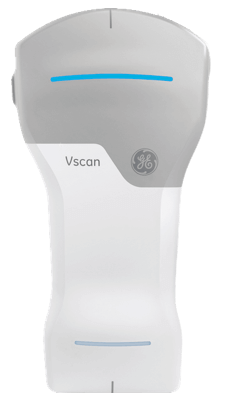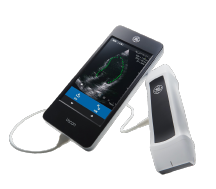
Prenatal ultrasound appointments are usually simple and happy affairs for expecting mothers. But, there are times during a woman’s pregnancy when her physician might need fast access to images. When a pregnant woman experiences complications like bleeding or pain, handheld ultrasound could be a valuable tool to quickly diagnose problems and assist in triage.
Physicians can use bedside or pocket-sized ultrasound machines, such as GE HealthCare’s Vscan Extend™, at the point of care to identify potential problems in real time, increasing access to and accelerating delivery of care for pregnant women and many other patients.
When to Choose Handheld Ultrasound
Handheld ultrasound devices are small, convenient and lightweight. They can perform well in emergency and delivery rooms, providing quick images for doctors treating pregnant women. They also can be useful in primary and community care settings for a wide variety of male and female patients.
A study published in Ultrasound in Obstetrics & Gynecology concluded that a pocket-sized ultrasound machine can be useful when assessing three kinds of prenatal patients: women who had bleeding and pain early on during pregnancy, those who presented for common obstetric assessment via ultrasound, and those who might have gynecological pathology.
What Handheld Prenatal Ultrasound Can Show
In the early stages of pregnancy, prenatal ultrasound can help physicians identify pregnant women who are at a high risk for complications so they can develop care plans to properly manage these pregnancies.
Based on clinical evidence from another study in Ultrasound in Obstetrics & Gynecology, “A battery-driven [pocket-sized ultrasound machine] can be used in third-trimester obstetrics for routine assessment of fetal growth (biparietal diameter, transcerebellar diameter and femur length) and for assessment of fetal well-being.”
When imaging pregnant women, handheld ultrasound is an effective option to quickly capture images. It can help doctors determine the clinical management of pregnant women, as well as identify and determine the best courses of action for emergency situations.




